Micro SD Card Adaptor
| Out Of Stock | SD_ADAPTOR | Micro SD Card Adaptor | $2 |
This Micro SD card adaptor allows you to easily use a micro SD card with Teensy 2.0. It can also be used on a breadboard, or with almost any AVR processor.
A 3.3 volt regulator and 5 to 3.3 volt buffer chip protects the SD card, and allows interfacing to 5 volt processors.
Guide for SD use on Teensy LC, 3.x. This small SD adaptor connect directly (as show below) only with Teensy 2.0. For all other boards, wires must be used to make the connections. This larger adaptor connects directly to Teensy LC, 3.0, 3.1, 3.2.
| Top Side | Bottom Side |
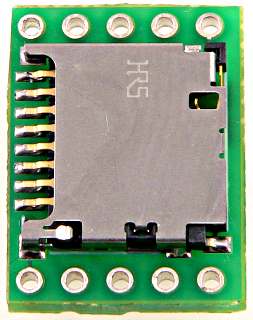 |
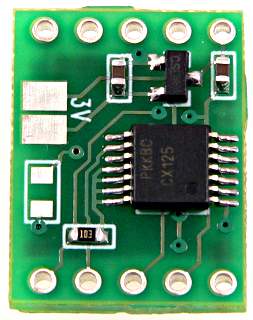 |
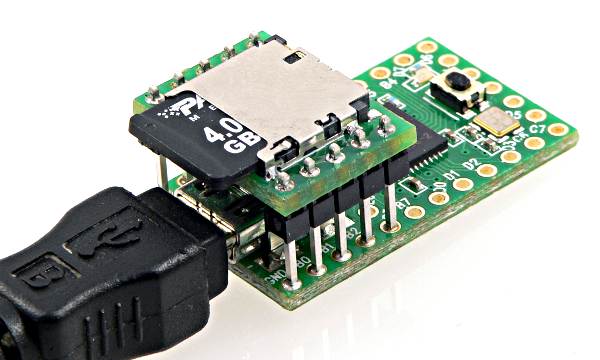
Teensy, Pins, Micro SD card and USB cable are sold separately.
Pin Diagram
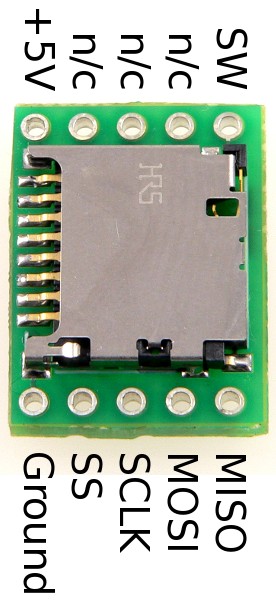 |
Schematic Diagram
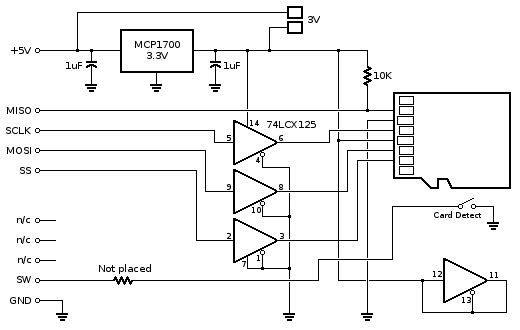 |
Dimensions
The board size is 0.7 by 0.52 inch. The pins are 0.1 (2.54 mm) spacing, compatible the solderless breadboard and most electronic prototyping materials. The two 5-pin rows are 0.6 inch apart.Teensy++ Connections
The SD adaptor can be used on Teensy++, with 4 pins and 2 wires.
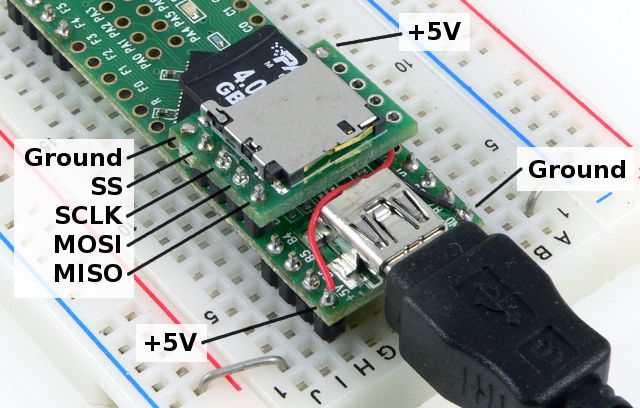 |
Software Support
The SD library work with this adaptor on all Teensy models. Just use SD.begin(pin) with the pin where the SS signals connects.On Teensy 3.2, 3.5, 3.6, 4.0, 4.1 up to 24 MHz SPI clock speed can be used. For details to set the clock speed, in Arduino click File > Examples > SD > SdFat_Usage.
Switch (SW) Pin
The flash socket has a switch that can detect when a card is inserted. Normally SW is not used. Most projects don't need this pin, and nearly all SD libraries just check for the card by communicating with it rather than requiring an extra pin.But if you design your code for a switch, or use someone else's code that requires a switch, the option is there. The switch connects to an an unpopulated resistor, so a low-value resistor or jumper wire needs to be soldered in place to enable access to the switch.
The switch might also be useful in special cases, like perhaps a battery powered project that waits for a card to be inserted. The pin change interrupts can wake the processor from a deep sleep mode, which would save battery life compared to regularly polling to see if a card has appeared.